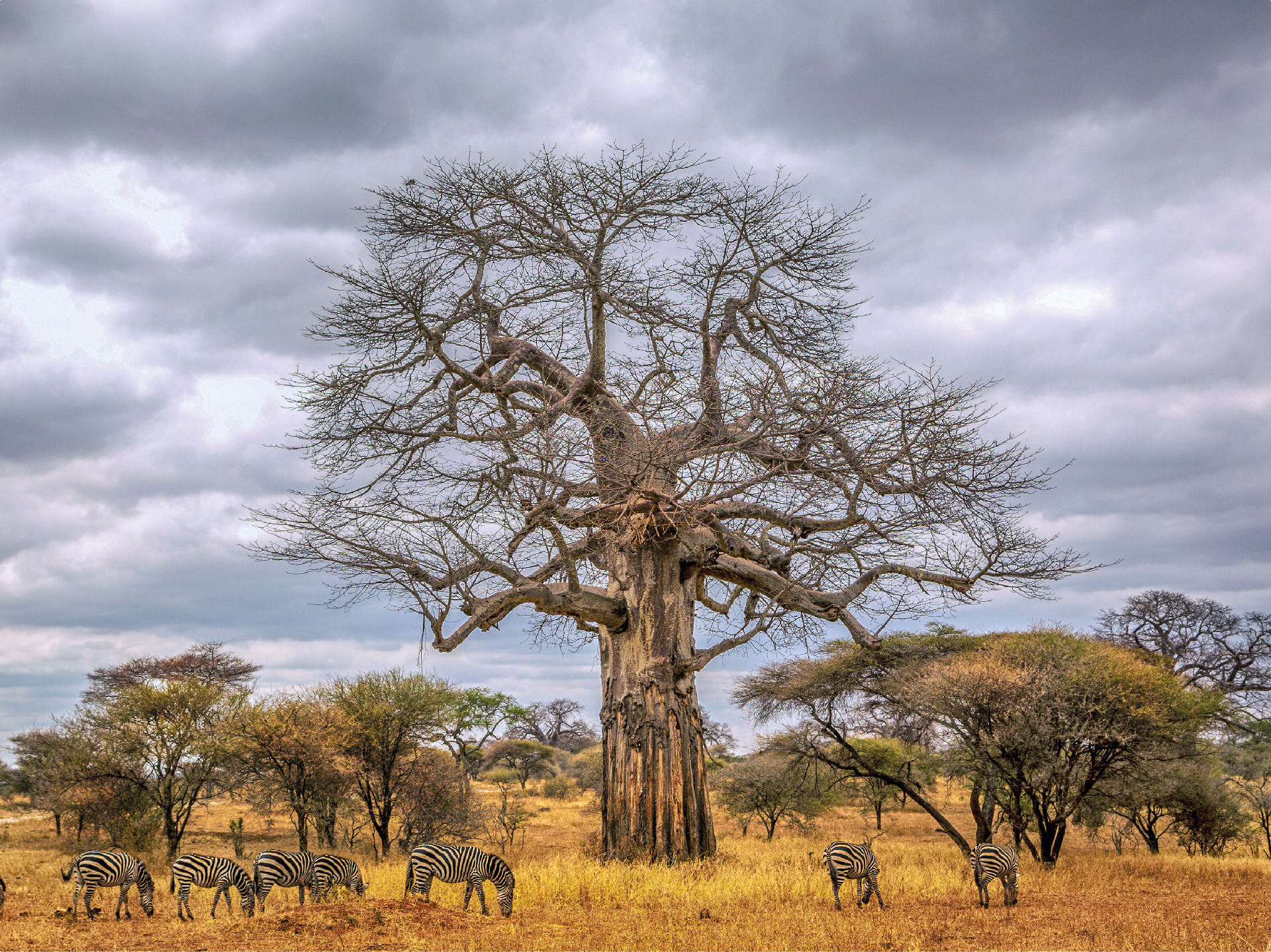Tarangire National Park, located in northern Tanzania, is named after the river of the same name that runs through it and covers an area of 2,600 square kilometres. Smaller than the Serengeti, it offers an impressive wealth of wildlife in a dreamlike setting, dominated by granite hills, ancient river valleys, acacia forests, giant baobabs and seasonal swamps that you can admire on our
luxury safari in Tanzania.
The river, during the dry season, being the only permanent source of fresh water, causes such massive migratory flows that it represents the greatest concentration of wildlife of all the parks in Tanzania.
During the height of the migration, from June to October, the landscape is populated by hundreds of different species of animals: wildebeest, zebra, giraffe, buffalo, kudu, ostrich, impala, Thomson's gazelle and hartebeest create a continuous movement through the savannah grass, while lions and leopards rest in the branches of the sausage trees. Disused termite mounds are often frequented by colonies of cute dwarf mongooses and pairs of barn owls that attract attention with their noisy duet, similar to the sound of a clock.
The marshes, tinged green almost all year round, are home to more species of nesting birds than any other habitat on earth. Observation can range from the Kori's bustard, the heaviest flying bird, to the big-headed ostrich, the world's largest bird, from the red-tailed weaver to the ashen starling...
The only place in Tanzania where unusual antelopes such as the majestic fringed-eared oryx and the long-necked gerenuk can usually be seen, the Tarangire National Park is an elephant paradise. The largest herds in East Africa live in this area, both during the wet and dry seasons. Before the rains, groups of a hundred or more pachyderms can be spotted every day, and some even at very close range.
It is also one of the best places in the world to admire the spectacular baobabs. Called trees of life, these 'giants', which can reach a height of 25-30 metres, with a trunk 11 metres in diameter, have the peculiarity of collecting up to 32,000 litres of water. This capacity is particularly useful for both elephants and indigenous peoples during the severe drought season. Their fruits, much appreciated by baboons and other monkeys, are of fundamental importance to the local tribes, which obtain food and medicine from them.
An unspoilt heritage of enchanting beauty and value, the Tarangire National Park, with its comparative giants (elephants and baobabs), is a true icon of the African continent and a popular stop for those travelling on the northern safari circuit to Ngorongoro and the Serengeti.











































